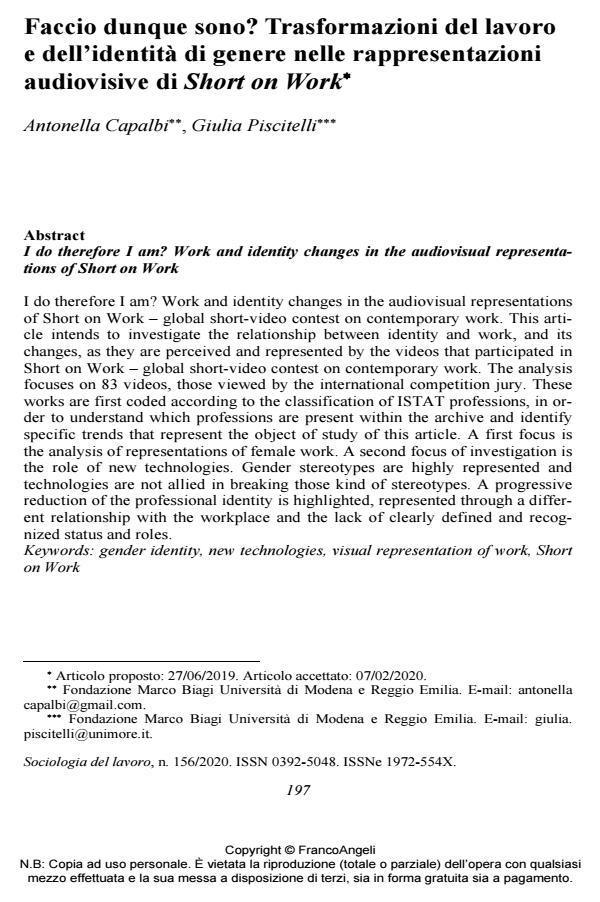I do therefore I am? Work and identity changes in the audiovisual representa-tions of Short on Work
Journal title SOCIOLOGIA DEL LAVORO
Author/s Antonella Capalbi, Giulia Piscitelli
Publishing Year 2020 Issue 2020/156
Language Italian Pages 17 P. 197-213 File size 186 KB
DOI 10.3280/SL2020-156009
DOI is like a bar code for intellectual property: to have more infomation
click here
Below, you can see the article first page
If you want to buy this article in PDF format, you can do it, following the instructions to buy download credits

FrancoAngeli is member of Publishers International Linking Association, Inc (PILA), a not-for-profit association which run the CrossRef service enabling links to and from online scholarly content.
I do therefore I am? Work and identity changes in the audiovisual representations of Short on Work - global short-video contest on contemporary work. This article intends to investigate the relationship between identity and work, and its changes, as they are perceived and represented by the videos that participated in Short on Work - global short-video contest on contemporary work. The analysis focuses on 83 videos, those viewed by the international competition jury. These works are first coded according to the classification of ISTAT professions, in order to under-stand which professions are present within the archive and identify specific trends that represent the object of study of this article. A first focus is the analysis of rep-resentations of female work. A second focus of investigation is the role of new technologies. Gender stereotypes are highly represented and technologies are not allied in breaking those kind of stereotypes. A progressive reduction of the profes-sional identity is highlighted, represented through a different relationship with the workplace and the lack of clearly defined and recognized status and roles.
Keywords: Gender identity, new technologies, visual representation of work, Short on Work
Antonella Capalbi, Giulia Piscitelli, Faccio dunque sono? Trasformazioni del lavoro e dell’identità di genere nelle rappresentazioni audiovisive di Short on Work in "SOCIOLOGIA DEL LAVORO " 156/2020, pp 197-213, DOI: 10.3280/SL2020-156009